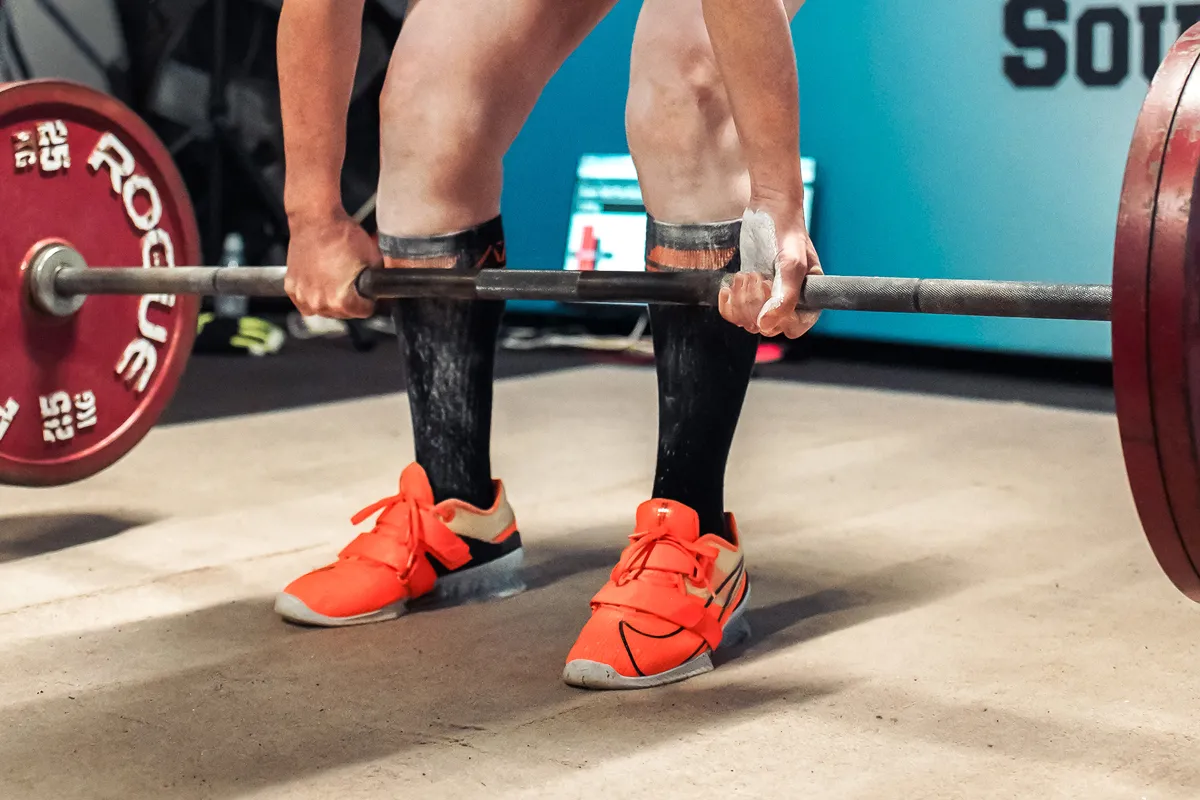
When it comes to deadlift grips, there’s four main options, each with its own benefits and drawbacks. We’ve done a quick run down so you can assess which might be the best fit for your goals and training experience.
1
Conventional Double Overhand
Known as the conventional grip, because it’s the most natural way to hold the bar. Both palms facing you (pronated grip) with thumbs wrapped around, it’s the goto grip because it’s simple and feels natural.
Why it works
- Keeps everything symmetrical, and both shoulders work the same way.
- Prevents asymmetrical load which may cause the barbell to rotate or drift away from your shins.
- Allows for a narrower grip position, making the lift more efficient.
- Develops genuine grip strength that carries over to other lifts and daily activities.
The downside
- Because this grip relies solely on your raw grip strength, once the weight you’re lifting exceeds your grip capacity, the bar will start to roll out of your hands.
2
Mixed Grip
As the name suggests, one hand over (in a pronated position), and one hand under in a supinated position). This is the grip you’ll see many recreational and competitive lifters use when the weights get serious.
Why it works
- The opposing hand positions lock the bar in place and prevent the bar from rolling.
- Allows you to lift significantly heavier weights than a conventional double overhand grip.
- Quick to learn with no additional equipment needed.
The catch
- Creates asymmetry through your shoulders and back, one shoulder will be externally rotated whilst the other is internally rotated
- Can cause the bar to rotate and drift away from your shins during the lift, which reduces efficiency and increases injury risks
- The bicep on your arm with the palm facing upwards (supinated grip) can be more vulnerable to bicep tears due to a higher degree of strain, especially under heavy loads
3
Hook Grip
This one looks like a double overhand grip, but your thumbs are placed between the bar and your fingers, creating a method to lock your grip on the bar.
Why it works
- Maintains perfect symmetry while handling serious weight, ensuring even distribution of weight and reducing rotation.
- Extremely secure once you master it and prevents the bar from slipping.
- Competition-legal for powerlifting meets.
The learning curve
- It can be very uncomfortable, even painful while your thumbs adapt and desensitise to the pressure placed on them.
- It takes weeks of consistent practice to get comfortable with, as a result many beginners will find it too uncomfortable to maintain for longer sets.
- Some lifters with smaller hands may struggle to position it properly.
4
Lifting Straps
Straps are simple fabric or leather loops that connect your wrists to the bar, taking grip strength largely out of the equation. If you’re looking for some affordable lifting straps, you can find our recommendations on our ‘Essential gear for strength training’ post.
Why they make sense
- By removing your grip capacity as the limiting factor it eliminates fatigue altogether, allowing you to focus solely on your movement pattern and deadlift heavier weights.
- Combines the symmetry of a double overhand position with the lock of a hook grip, without any of the discomfort – the best of both worlds!
The exception
- If you’re planning to compete then lifting straps are usually a no go, since they’re not permitted to be used in competitions.
If you’re just starting out with deadlifts we recommend opting for a double overhand grip – it’s the most balanced and efficient option for beginners. Use the double overhand grip for as long as possible, to build up your grip strength. When your grip strength becomes the limiting factor, switch to lifting straps (as long as you’re not involved in competitive lifting!).
For competitive powerlifters It’s worth investing the time to learn the hook grip. The initial discomfort pays off with a secure, symmetrical grip that’s permitted in competition.

